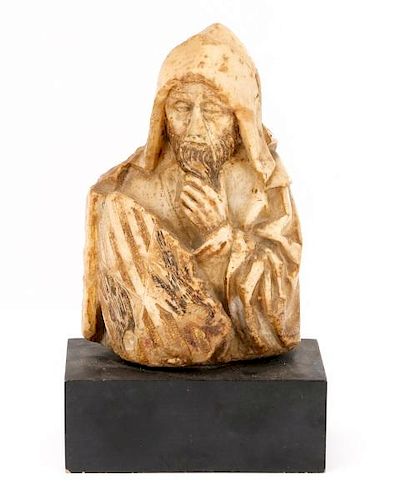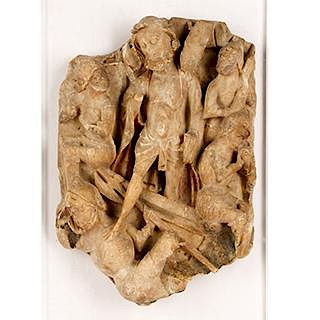Medieval Carved Alabaster of a Cistercian Monk
About Seller
1788 Ellsworth Industrial Boulevard NW
Atlanta, GA 30318
United States
Ahlers & Ogletree Auction Gallery is a full-service auction gallery strategically located on Miami Circle in the historic Buckhead district of Atlanta, one of the Southeastern United States’ largest commercial and financial centers. The gallery is owned and operated by Robert Ahlers and his wife Chr...Read more
Two ways to bid:
- Leave a max absentee bid and the platform will bid on your behalf up to your maximum bid during the live auction.
- Bid live during the auction and your bids will be submitted real-time to the auctioneer.
Bid Increments
| Price | Bid Increment |
|---|---|
| $0 | $25 |
| $250 | $50 |
| $1,000 | $100 |
| $2,000 | $250 |
| $5,000 | $500 |
| $10,000 | $1,000 |
| $20,000 | $2,500 |
| $50,000 | $5,000 |
| $100,000 | $10,000 |
| $200,000 | $25,000 |
| $500,000 | $50,000 |
About Auction
Apr 30, 2016 - May 1, 2016
Ahlers & Ogletree elizabeth@aandoauctions.com
- Lot Description
Continental (French and Spanish), last half of 14th century. Medieval ecclesiastic hand carved "Nottingham" alabaster figural sculpture with remnants of polychrome and gilt decoration, likely created from a Southern French workshop, depicting a male Cistercian monk. Man in traditional robes with hooded and wide sleeved cowl, hand to bearded chin expressing deep thought, wrinkled forehead and calm facial expression, coat of arms in front of chest for Aragon and Sicily. Unsigned. Overall supported on a later black rectangular plinth base. Overall (including stand) approximate height 8", width 4.75", depth 2.8". Provenance: Cistercian Cloister, Poblet, Tarragona, Spain (as noted by Edward R. Lubin, Inc.), Edward R. Lubin, Inc. Works of Art, 17 East 64th Street, New York, New York whereby acquired by the Estate of Dr. Woody Cobbs and Mrs. Honor Cobbs, Atlanta, Georgia in 1965. Copy of object description and image plate as well as original invoice from Edward R. Lubin, Inc. available upon request. Note: Lubin notes three references on his description that help date this work and compare the monastic sculpture to similar figures from The Myron C. Taylor Collection in New York and the Figdor Collection in Vienna.
Condition
Under blacklight examination, no apparent repairs. Bottom of alabaster drilled and mounted with screw for display. Allover with minor chips and abrasions commensurate with age - most notably to front of hood, these not overly obvious or distracting. Rough bottom surface of alabaster and carved divot to back indicate that this work was likely originally part of a larger composition. Gilt and polychrome losses commensurate with age.
- Shipping Info
-
Shipping is handled by your preferred third-party company, and as such, you will be invoiced for shipping by your chosen company. We strongly urge our buyers to obtain a quote for items of interest in our auctions prior to bidding. Please review our payment/pick-up policy as it relates to storage and fees.For further assistance, please go to our website, click on "Bidding & Services" for the "Shipping" information page to reference a list of preferred shippers and FAQs regarding delivery and shipment of your won lots.
-
- Buyer's Premium



 EUR
EUR CAD
CAD AUD
AUD GBP
GBP MXN
MXN HKD
HKD CNY
CNY MYR
MYR SEK
SEK SGD
SGD CHF
CHF THB
THB




















